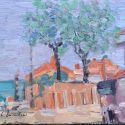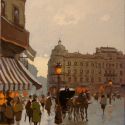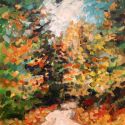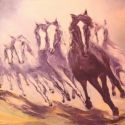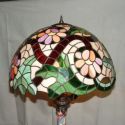He was born in Romania, as Eugen Ionescu, but will become known world wide as a French playwright and dramatist, one of the very best in modern history and maybe the most important name in the gallery of the Teatre of the Absurd, as he had the courage and genius to push the boundaries of the genre, logic and imagination as no one else had. An enigmatic and little known figure, idolised by many and missunderstood by others, Eugene Ionesco is literally one of the greatest theatre personalitaties ever.
Eugen Ionescu was born in Slatina, Romania, on November 26th 1909, in a rather rich and respectable family, of Orthodox faith, although later the writer would claim he had a lot of Jewish ancestry from his mother. They moved to Paris just shortly after, where the family grew even more, and little Eugene played and discovered children literature. The father returned to Bucharet in 1916 and for a long while the family thought he was killed in the war. Back in Paris, Eugene wrote his first "play" and other texts, later lost.
Finding out that his father was more than allright, being remarried to another woman, the relationships with the children and Eugene especially worsened. As for the future playwright, this would only bring him much closer to his mother. In the end, due to financial constraints, Eugen Ionescu had to return to Romania and enrolled in 1924 at the St Sava Highschool in Bucharest, then, 1928, finally completed his highschool studies in Craiova, managing to adapt himself to his home country, although the nostalgia of Paris was overwhelming. In 1926 he broke all ties with his mother and moved once again together with his mother and sister. It was a hard time for him, but Eugene was more interested in literature than earning a living.
He had made his debut in Bilete de papagal, Arghezi's publication, in 1928 and published several other articles, as well as lyrics, he became a close friend of Eliade, Cioran and other young intelectuals and proved to be a good writer and journalist. It wasn't long before he became a familiar presence and name in the pages of newspapers and magazines such as Facla, Vremea, Floarea de Foc, Romania Literara, Critica, Axa, ideea Romaneasca, Zodiac, Universul literar and on, and on. It is interesting today to see that, rather than being seduced by the right wing ideas of Fascism and especially of the Iron Guard, as most of his coleagues were, Ionesco maintained a disdain and rejection of any totalitarian ideals, even going as far as to violently criticise this political option. A position that didn't bring him much support, but made him stand out from the crowd. And also gained him some enemies.
Eugen Ionescu would also shock the artistic world in 1934, when he published Nu, a violent volume in the same style as the other revolted young writers, a collection of essays, which simply obliterated and destroyed famous Romanian classics and contemporaries, such as Tudor Arghezi, Ion Barbu, Camil Petrescu and so on. It was a very appreciated and successful book, at the same time it caused a terrible stir and scandal, and brought the author even further resentment. After marrying Rodica Burileanu and losing his mother, teaching for a while and keeping on writing, Eugene Ionesco decided that there wasn't much for him in Romania.
Most of his former friends were nationalists, close to the Iron Guard ; the war was a real threat and kept going stronger ; the chances for him to live comfortably of his articles and books was slim in Romania. So he decided to return to France, and left for Paris on a scholarship, where he would theoretically write a thesis on "Theme of sin and theme of death in French poetry beginning with Baudelaire". Of course this would never be completed, and Ionesco preffered to practically severe his ties with his country and began publishing articles and notes in French magazines.
In 1939 he made the mistake of returning to Romania, for fear of the war, a decision which he deeply regreted and finally managed to come back to France in 1942, first living in Marseilles. He kept writing and translating, money was more than tight, but finally he had the chance of becoming a cultural attachee of the Romanian Royal Legation at Vichy, a controversial choice, and also had a daughter, Marie-France. Finally, after the end of the war, the family settled down in Paris, in a small house, yet the financial difficulties carried on, and Eugene Ionesco had to make ends meet as best as he could. He translated the works of Urmuz and in 1948 began writing his first ever play, La Cantatrice Chauve / The Bald Singer, which will be staged, with little success, in 1950. Ignored by the public, appreciated by friends, it was a first important step. And marked a new beginning for Ionesco.
Over the next years, Ionesco would continue writing more and more plays and finding theatres willing to stage his creations. It wasn't long before he became well known and controversial, and it wasn't long before he could name himself one of the most important playwrights alive and the master of the Absurd Theatre. Play after play, he became a household name and a very influential and respected author. He won the prestigious Prix Alphose Allais in 1954, became a member of the French Academy, fought with all o fhis strenght for the human rights, especially againtst the Communist regime of Romania, kept in touch with his old friends. His works were translated and published/played worldwide, much to his awe, as the master of the absurd theatre never thought this would be possible.
At the height of his glory, a true master of literature, Eugene Ionesco died on March 28th 1994 in Paris, at home, after a long and successful career. It was a deer loss for anyone who loved theatre, especially at a time when the possibility of returning to Romania for a short while existed.
October 2008



